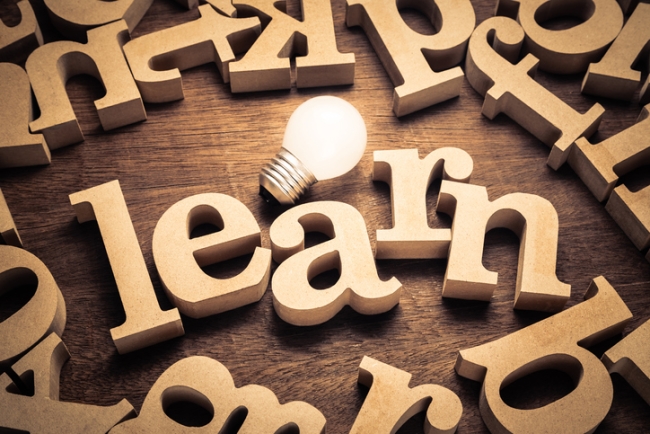You have /5 articles left.
Sign up for a free account or log in.

Istockphoto.com/Patpitchaya
Not long ago, I spotted some students getting ready for an exam. They were sitting in the library of American University in Washington, hunched over a table, highlighting key sections in a textbook, marking up the words in neon pinks, yellows and blues. The students sat together conspiratorially, commiserating over their upcoming exams and hoping that their dedication would pay off.
Highlighting is a time-honored study practice, of course. But it turns out that it might not be the most effective way to learn. In recent years, research on the skill of learning to learn has found that approaches like self-quizzing are far more effective than more traditional approaches like highlighting or even rereading.
What’s more, many recent studies have shown that when educators teach their students the skill of learning, the students perform much better in class. The effects have been particularly large for students from disadvantaged backgrounds who might not have acquired robust learning skills in high school.
For a long time, colleges and universities have dismissed the skill of learning as mere study skills. But there’s growing interest in giving students a richer sense of how to gain knowledge. After all, one of the constants of the modern world is dramatic change. That makes the ability to acquire new skills crucial, and the faster someone can learn a new area of expertise, the better they’ll do in college -- and their career.
Some colleges and universities have been pushing the skill of learning, and professors at those institutions are encouraged to teach students not only content and skills but also how to learn. One example is the Iron Range Engineering program of Minnesota State University, Mankato. Students at the school gain the skill of learning to learn by working on real-world projects (instead of just taking exams). Professors also encourage students to learn how to engage in thinking about thinking as well as self-quizzing (instead of just reading the textbook).
At my organization, the Learning Agency, we launched an online learning to learn course recently that aims to give people robust learning skills, and we’ve seen a surprising amount of interest in the class from people who just want to improve their learning skills.
When it comes to the science of learning, one key practice is to make learning cognitively demanding. Students should aim to make studying a matter of mental struggle. This approach makes learning more active and more effective. Indeed, one of the reasons that highlighting is not a great way is learn is that it’s simply too passive.
Instead, students should learn the art of quizzing. When students ask themselves -- or other students -- questions, the learning becomes more active and thus more effective. Sometimes known as retrieval practice or the testing effect, this approach to learning is highly effective and been replicated in many studies. Researchers have found the approach to be particularly potent for disadvantaged students, and in one study, the practice helped lessen the achievement gap by more than 50 percent.
The quizzing doesn’t have to look like a quiz, either, and at Iron Range Engineering, professors have been putting this idea into practice by using clickers and pair and share (basically having a student talking to another student). “We need to help students find more meaning in their work, and so we do a lot more questioning than ever before,” says Ron Ulseth, the director of academics and research at Iron Range.
One simple approach to promote more quizzing is to ask students to do a "brain dump." As cognitive scientist Pooja K. Agarwal argues, this “free-recall” strategy is a “small strategy with a big impact.” Basically, the professor pauses a lesson or activity and asks every student to write down everything that they can remember. Once that’s been done, the lesson or activity is continues.
When using the free-recall activity, be specific with your prompt. For example, let students know how many items you’re looking for or any time limit. You might say, “OK, let’s take a pause and see how we’re doing … please write down three things you remember about XX topic.” Or, “Let’s see what we remember … take 60 seconds to write down everything you can remember about XX topic.”
This active-learning approach can take just five minutes or less. And it is more effective than just calling on one student at time, as the writing guarantees that all students are actively retrieving what they remember from the lesson. The approach can count toward the student’s final grade or not.
The Power of Forgetting
Another important aspect of learning to learn is to embrace the power of forgetting. Old or young, forgetting is inevitable. Some recent research argues that forgetting is actually a product of evolution, helping us to “optimize decision making.” To account for this fact, students need to make sure to spread their learning out over time. Practically speaking, it’s better, for instance, to study a little bit each day rather than do one massive study session. Students will simply forget a lot less.
Again, some institutions are leading the way. Dozens of graduate programs in pharmacy, for instance, now require regular cumulative assessments, which encourage students to do more to space out their learning.
Another approach that professors can take in the classroom is to regularly revisit material. Students tend to do better when they are given several opportunities to review what they’ve learned. A professor can help facilitate this by periodically revisiting key topics throughout the semester.
For instance, a few weeks into a unit, you might incorporate a brief review of what was covered early on in the lesson. Homework, group activities and project assignments can also be used to facilitate this revisiting of material. For example, you can ask your students to split into small groups and review some key concepts from previous lessons. They can discuss several topics and then share them with the larger group.
For educators, it’s not enough to model these learning strategies around forgetting or quizzing, though. The approaches also need to be put directly into the hands of students. Young people need to understand the basics of how to learn, and these practices can be taught -- and learned.
Last month, for instance, PLOS One featured a study in which the instructor offered a short lecture to students on the benefits of spacing and self-quizzing. The research found that the approach helped students improve their learning strategies. The effects of these interventions can be large, too. In a different study, some students saw their grades jump by more than 20 percentage points, or about two grade levels, after learning about how to learn.
The science of learning is contextual, of course. It’s no silver bullet. It looks different in different courses and subject areas, and just teaching students to quiz themselves isn’t enough to guarantee success.
But too many students lack an understanding of the science of learning. To prepare them for the future, our colleges and universities need to do much more to give them the skill of learning to learn.




